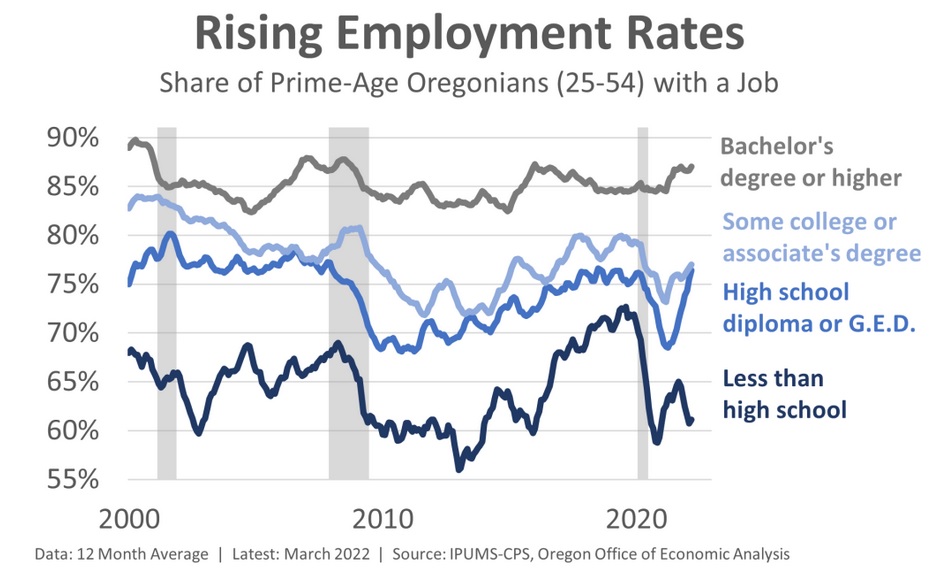
By Josh Lehner,
Oregon Economic Analysis Office
Our economy, and our society have long-standing disparities that remain today. The good news so far this cycle is that when it comes to employment trends and opportunities by age, gender, geographic location, and race and ethnicity, these disparities are not wider today than they were before the pandemic hit. That makes this recovery inclusive, or at least more broadly shared than past recoveries.
That said, two other disparities have widen. Wealth inequality has increased. Even as incomes and wealth have increased across the board, the gains are larger among the upper end of the distribution. This is particularly true for homeowners given the record-setting home equity gains experienced during the pandemic. The gap between the haves and have nots is larger today than two and a half years ago.
The second disparity that widened during the pandemic is employment by educational attainment. Given the nature of the pandemic shock and shutdowns, it was the in-person service industries that bore the brunt of the layoffs. Such positions are disproportionately filled by workers with lower levels of educational attainment. Employment for college graduates barely changed other than some are now working remotely to a greater degree.
The encouraging news today is these educational attainment disparities are lessening. Job growth has been strongest among the hard-hit service sectors. Moving forward a full recovery is expected. Job growth will be more balanced across sectors and based on underlying economic and consumer spending patterns rather than pandemic-related forces.
Finally, it is true that some employment disparities by sex, and race and ethnicity did widen initially in the pandemic. However, they have now closed. Looking at national data, employment trends for Asian, Black, Hispanic or Latino Americans are each a percent or two stronger than for white Americans. In terms of employment by sex, nationally men are a few tenths stronger than women, while here in Oregon trends for women and men are identical. Even the parent gap has effectively closed. Employment rates for moms with young children at home have caught up to the broader labor market trends. Dads are still outperforming by a percent or so, but moms are no longer lagging the overall economy.
None of this means that everything is fine. We have long-standing disparities that remain. And even as the racial poverty gap and urban-rural divide narrowed initially, we know some of that had to do with the large federal aid earlier in the pandemic. From that view, it is possible that those disparities will widen a bit in 2022 and 2023, returning to their pre-pandemic differences. Time will tell. But for now, the fact that the current, strong labor market recovery has also been inclusive is encouraging.
Disclaimer: Articles featured on Oregon Report are the creation, responsibility and opinion of the authoring individual or organization which is featured at the top of every article.

